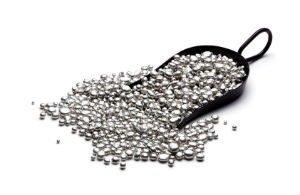New Dr. Group Post! - 3 Types of Silver |  |
| Posted: 17 Nov 2014 07:00 AM PST  Silver is an ancient tool that has been historically used for a variety of applications. There is some contemporary evidence showing silver’s effectiveness for supporting a healthy bacterial balance. Recently, silver has come under fire for being marketed as a cure for potential pandemic diseases. While it's true that no one product–including silver–can cure a disease, there is some evidence that is can support the body when faced with harmful invaders.
Which Silver is the Best?Today, there is a large market for silver in the natural health industry. A variety of types of silver exist, and it's almost impossible to determine the quality of the product simply by its name. Ionic silver, hydrosol silver, and colloidal silver are all different types of silver available. In the content below, we'll quickly explore the differences between the three most popular types of silver and discuss which type is best. Let's examine the different types of silver available on the market: 1. Atomic Silver (Colloidal)Atomic silver is typically prepared with a high-voltage AC method to obtain the purest silver solution. A quality atomic or colloidal silver product should contain 99.99% silver particles in a distilled water solution. Submicroscopic particles are suspended in solution using electrical forces, providing a stable product. Pure colloidal silver has been shown to support the body's defenses against viral attack, especially if applied topically to a cut. [1] Atomic silver is of higher quality compared with other forms of silver on the market, and it is believed to carry a low risk for argyria. 2. Ionic SilverAn ion is an atom that is missing an electron, giving it a positive or negative charge. Ionic silver is basically silver ions dispersed in a liquid medium, usually water. These ions can form compounds with other elements, making ionic silver an unpredictable product. Ionic silver is often linked to agyria, a condition that causes a bluish tint to the skin. [2] This condition is permanent, making ionic silver a less-than-ideal choice compared with other forms. 3. Hydrosol SilverSilver hydrosol contains around 96% charged silver atoms, slightly lower than that of colloidal silver. While hydrosol silver may still provide similar benefits, it's considered by many to be ineffective for some conditions. Hydrosol silver carries a greater risk for argyria than colloidal. Most silver hydrosol on the market, however, contain no protein additives or salts. This is a slight benefit, as silver should always be in a pure solution in order to avoid contamination. Which Should You Choose?Overall, colloidal silver produced using a high-voltage AC method to dispense silver particles appears to be the most pure and effective form of silver available. Consumers should do their research into silver products to make sure they do not contain any additional ingredients, like salts or proteins. These ingredients reduce the effectiveness of the product, something that can be problematic in medical emergencies. Check out Silver Fuzion® if you are looking for a product that is free of additional contamination and unnecessary ingredients. -Dr. Edward F. Group III, DC, ND, DACBN, DCBCN, DABFM References:
The post 3 Types of Silver appeared first on Dr. Group's Natural Health & Organic Living Blog. |
| You are subscribed to email updates from Dr. Group's Healthy Living blog To stop receiving these emails, you may unsubscribe now. | Email delivery powered by Google |
| Google Inc., 1600 Amphitheatre Parkway, Mountain View, CA 94043, United States | |
No comments:
Post a Comment